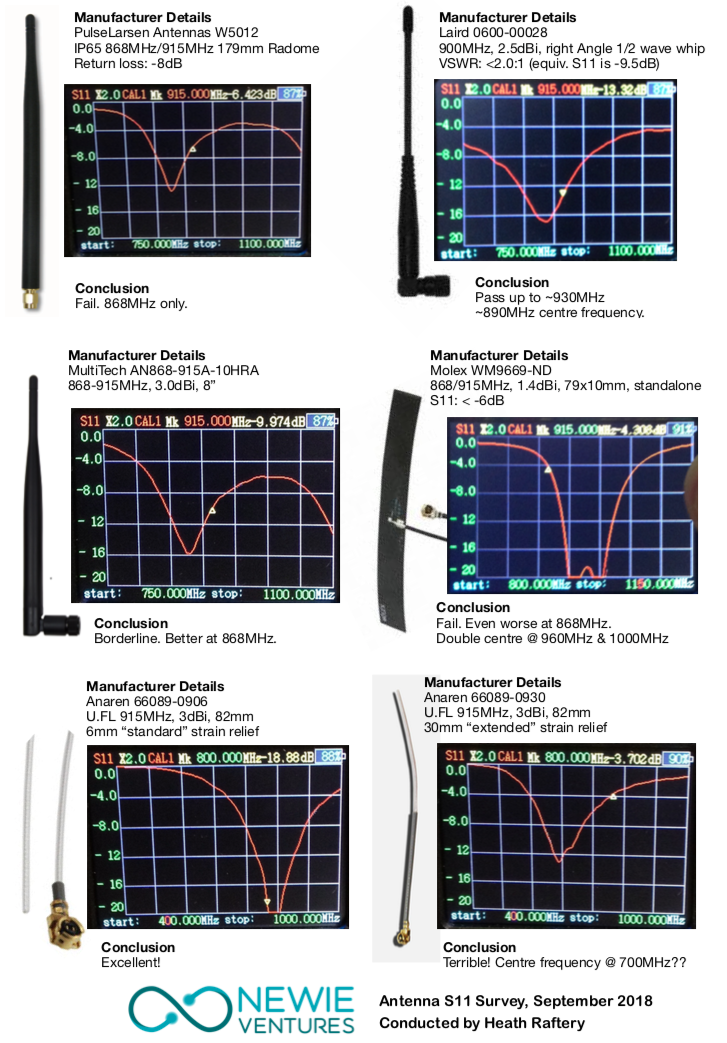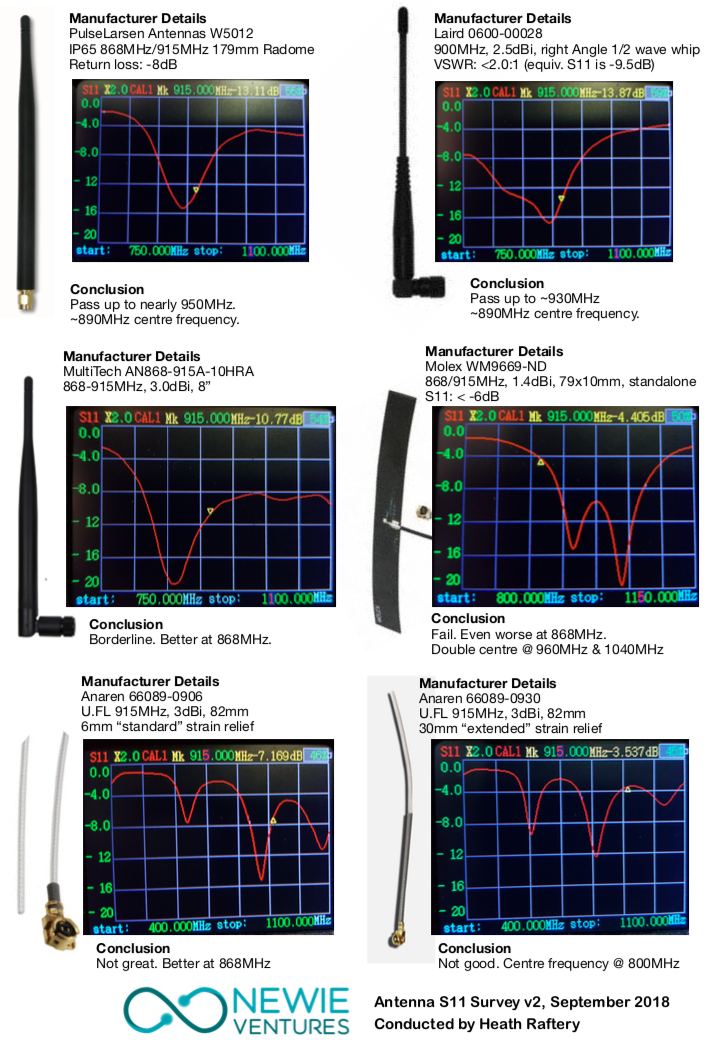Coincidentally I performed a similar exercise as jpmeijers original catalog, but for the 915MHz band. The apparent poor performance of off-the-shelf antennas caused quite a stir on LinkedIn.
Here are the version one results, with the antenna mounted on the VNA just like jpmejiers did. I believe that’s a good indication of performance in most typical configurations, where you screw the antenna directly to the electronics enclosure.

Here are the updated results with the antenna connected through 50cm of cable, mounted on some non-RF active material. I believe that’s a good indication of what happens if you take the ground plane away, as would be the case when you’re mounting the antenna externally.

Hmm, the previews aren’t very clear. Here’s some links to the originals: Antennas.pdf (2.0 MB) and Antennas with 50cm cable - smaller.pdf (398.0 KB).